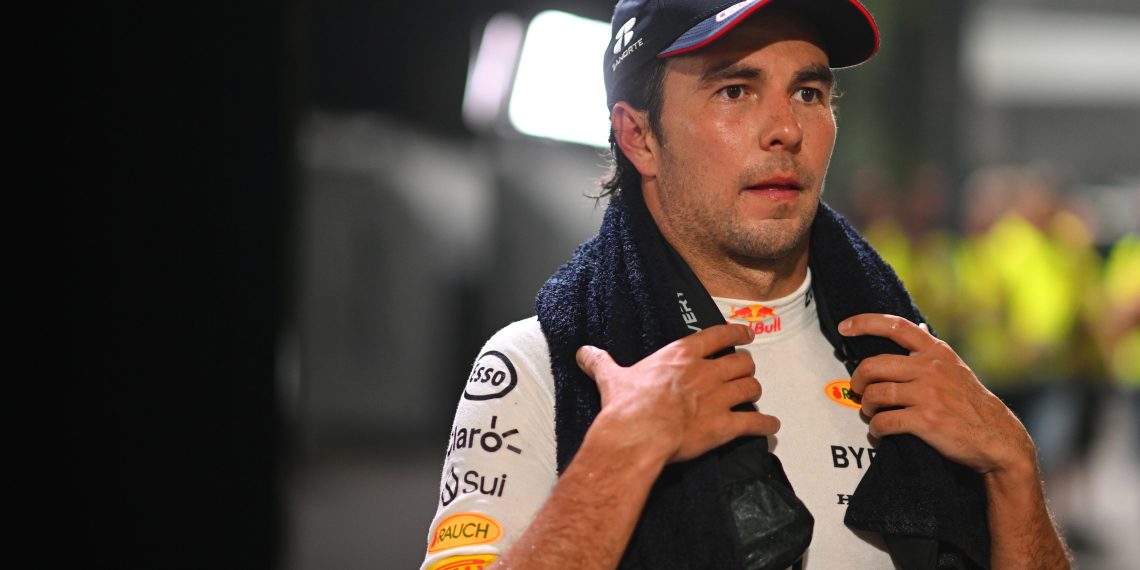The official confirmation of Sergio Perez’s departure from Red Bull marks the end of a tumultuous chapter for both driver and team. What began as a promising partnership in 2021, built on Perez’s consistency and ability to back up Max Verstappen, ended with an unprecedented collapse in form that contributed significantly to Red Bull’s slide to third in the Constructors’ Championship. Yet, as much as Perez must shoulder some of the blame, the real question is whether Red Bull’s own approach doomed the partnership from the start.
Perez’s Astonishing Decline
The extent of Perez’s drop-off in 2024 is almost unfathomable. After starting the season strongly, with podium finishes and competitive performances, his results disintegrated after the Miami Grand Prix. In the subsequent 18 races, Perez managed a paltry 49 points—an output more in line with a struggling midfield driver than a competitor in a championship-winning car.
The final blow came in Baku, where a crash while battling for a podium symbolized his broader struggles. While Verstappen continued to notch victories and accumulate 301 points in the same span, Perez languished in irrelevance. His inability to adapt to the RB20’s evolving characteristics, combined with Verstappen’s unmatched dominance, made his position untenable.
Red Bull’s Role in Perez’s Decline
Perez’s struggles were not entirely self-inflicted. Red Bull’s car development philosophy has long been tailored to Verstappen’s aggressive driving style, leaving the second driver to adapt—or fail. This environment is unforgiving, as evidenced by the fates of Pierre Gasly, Alex Albon, and now Perez.
Hiring Perez was supposed to break this cycle. His experience and proven track record in midfield cars offered a stabilizing presence, and for a time, it worked. Perez played a key role in Verstappen’s 2021 title campaign and helped secure back-to-back Constructors’ Championships in 2022 and 2023. But as Red Bull’s dominance faded in 2024, the cracks in its second-driver strategy were laid bare.
The Contract Debacle
The decision to extend Perez’s contract through 2026, announced during his midseason slump, now seems inexplicable. Red Bull had ample evidence that Perez was struggling to adapt to the car and the team’s high-pressure environment. Instead of waiting for the season to play out, the premature renewal only compounded the situation, leaving Red Bull with fewer options as Perez’s form continued to deteriorate.
The Replacement Gamble
Red Bull now faces another critical decision: how to fill the second seat alongside Verstappen. While Liam Lawson is the likely successor, promoting him carries significant risks. Lawson has shown promise, but he is unproven over a full season and could fall victim to the same pressures that overwhelmed Gasly, Albon, and Perez.
A safer choice would have been Yuki Tsunoda, who has steadily improved and demonstrated resilience in the RB setup. Promoting Tsunoda would have given Lawson time to develop without the weight of competing directly with Verstappen—a dynamic that has historically stifled Red Bull’s second drivers.
The Real Problem: Red Bull’s Operating Environment
The common denominator in the struggles of Red Bull’s second drivers is not the drivers themselves but the team’s culture and structure. Red Bull has consistently failed to create an environment where its second driver can thrive, instead building a team entirely around Verstappen. While this has delivered remarkable results for Verstappen, it has also left Red Bull vulnerable when the Constructors’ Championship comes under threat.
Red Bull’s refusal to adapt its approach or learn from past mistakes has created a revolving door of second drivers, each set up to fail in the same way. The decision to fast-track Lawson into a high-pressure role without addressing these systemic issues risks repeating the same pattern.
A Missed Opportunity for Reflection
As Red Bull moves forward, it must confront the reality that its driver management strategy is fundamentally flawed. The team’s reliance on a single superstar driver has yielded individual brilliance but at the cost of team-wide stability. Until Red Bull prioritizes creating a supportive environment for both drivers, it will remain trapped in a cycle of short-term solutions and long-term consequences.
Sergio Perez’s exit underscores the need for Red Bull to rethink its approach. While Perez’s decline was dramatic, it was also avoidable. If Red Bull truly wants to regain its footing and avoid repeating history with Lawson—or whoever fills the second seat—it must address the systemic issues at the heart of its driver program. Otherwise, the cycle will continue, with the team paying the price in points, reputation, and championships.









